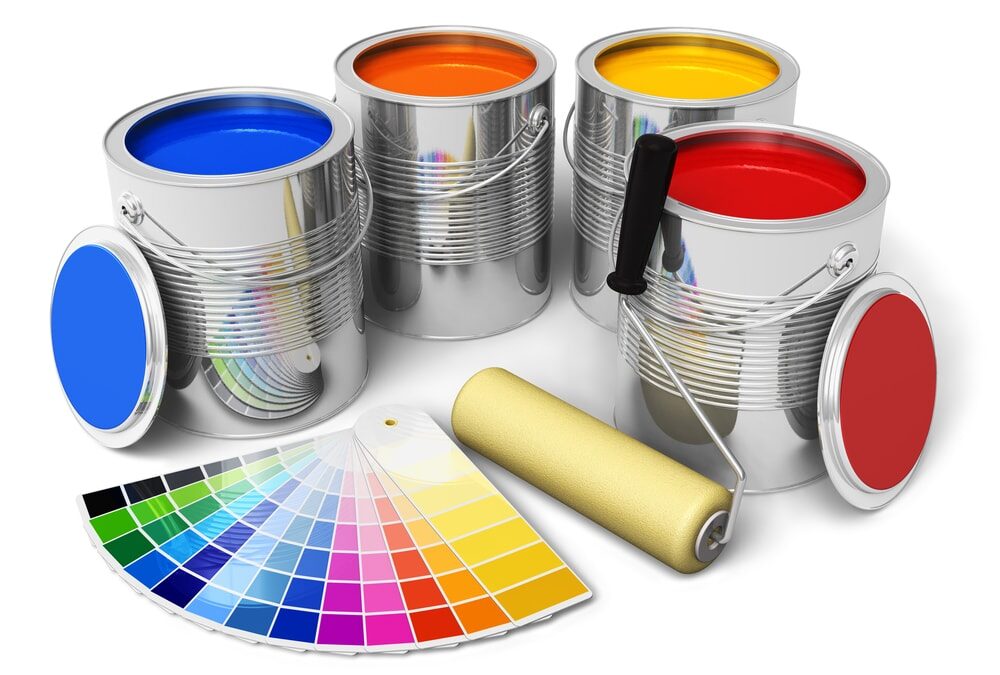Paint is, for all intents and purposes, chemistry in a can!
From the elaborate pigments and sophisticated resins to the complex solvents and other additives, obtaining a viable can of paint requires a lot of precise measuring and intricate mixing. Therefore, each can of paint you see is wholly unique and distinctive in its own right, much like how dish detergents, laundry soaps, and cleaning solutions vary from brand to brand. So let’s take a quick look at the composition of modernized paint:
- Pigment: Pigment is essentially the substance(s) within paint that provides color and gloss, but broken down into two specific categories. Extender pigments are more cost-effective, but they only contribute to a given paint’s dry hide, whereas prime pigments contribute to both wet and dry hide in exchange for a higher price point.
- Resin: The resin serves as the paint’s primary binding agent, which means that it holds pigment particles together and provides adhesive properties upon application.
- Solvent: The solvent is essentially the vehicle that allows paint to easily move from the can to the targeted surface, but it’s important to note that the quality of the solvent has a direct effect on the quality of the finish. Therefore, high-quality solvents allow the paint mixture to store a greater amount of solids in the form of resins and pigments, which translates to a uniform finish once all of the liquids have dried up.
- Additives: From thickening agents and surfactants to biocides, defoamers, and co-solvents, high-quality paint manufacturers use various compounds in an effort to affect greater viscosity and paint stability.
The Benefits of Purchasing High-End Paint
Although many homeowners tend to take shortcuts when enacting renovation projects, you should never cut any corners when selecting your primary paint. Cheap paint will force you to facilitate incessant touch-up work due to its unsophisticated composition, whereas high-quality paint will provide the following advantages:
Better Pigments
Almost every paint features clay, silica, and talc within its composition, but it’s worth noting that the best-rated paints contain a higher percentage of titanium dioxide, which is a pure white powder that has remarkable hiding qualities. As such, it’s not necessarily about the amount of pigments in the paint, but rather the quality of the pigments.
First-rate Resins
The best-rated resins are made of tiny particles that can deeply penetrate the host material’s pores, which allows the paint to maintain adhesion with minimal peeling, blistering, or tearing. Since the resin is the most expensive component within any can of paint, you’ll see a corresponding increase in price when looking at high-end paints with superior resins.
Additional Solids
High-end paints feature more combined solids and fewer liquids when compared to cheaper paints, which means that the quality of solvent plays a huge role in any given paint’s finish. A high-quality paint will be comprised of up to 45% solids, whereas an inexpensive paint will probably contain less than 30%. A higher percentage of solids will translate to a thicker film, better hiding properties, and increased longevity.
Superior Additives
Expensive paints usually come equipped with bonus compounds such as mildewcides, biocides, thickeners, freeze prevention chemicals, and surfactants. These additives work in concert to provide better adhesion, color stability, and mold deterrence, which effectively translates to a superior finish regardless of the host material.

